The Undergraduate Research Symposium is set to take place Friday, Oct. 25, from 10:30 a.m. to noon in Roone Arledge Auditorium. This annual event showcases scholarship across a range of disciplines. For a sneak peek, we spoke with six students about what inspired their interest and where their curiosity took them.
Izagani Aquino CC’25
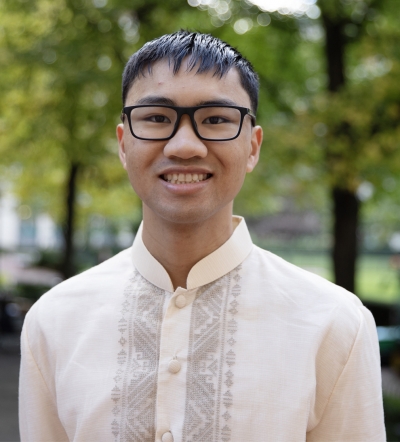
Research topic: The lives of the Manongs, a group of Filipino-American men who were migrant farmworkers in California’s Central Valley and led the Delano Grape Strike from 1965 to 1970. While the Manongs were integral to the Grape Strike’s success, they are largely missing from historical records; due to historical anti-miscegenation laws in California, the vast majority of the Manongs were unable get married and start families. As such, they were unable to pass on their stories and legacies.
While written accounts of the Manongs are limited, they were extremely involved in “feeding the strike.” For example, they organized food caravans to bring donated provisions to Delano, they cooked shared meals for striking workers, and they fed both Filipinos and Mexicans in the Filipino Community Center that served as the movement’s primary organizing space. By tracking the movement of food into Delano and within the community of striking workers, a more holistic picture of the Manongs’ involvement begins to develop.
Why I chose it: I frequently share my work with my Filipino cultural group back home, and every time I do, at least a few people point out that the immigration stories of the Manongs are not entirely dissimilar from their own experiences coming to America. The Manongs came from the same area of the Philippines as my parents, so the connections run even deeper. Ultimately, while the Manongs led an extraordinary movement in American labor history, their experiences are quite ordinary for many Filipino Americans. This project is extremely personal for me, and by sharing the story of the Manongs, I feel like I am honoring the stories of many other Filipino Americans.
Biggest takeway: That food can be a historical source is something I find fascinating. With all that I’ve learned about food as a window into labor history, I’m interested to see how it could be a method for telling the stories of other marginalized groups and for creating historical records that might otherwise fade into obscurity.
Arnold Caleb Asiimwe CC’25
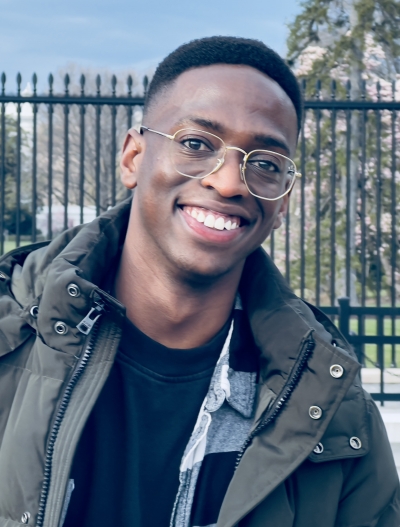
Research topic: Neuro-inspired, resource-efficient, generalist medical artificial intelligence. The term “generalist” here means it can answer a wide range of complex medical questions. I’ve spent a lot of time learning and thinking about efficiency — whether in AI models, the brain’s visual system or algorithms — and how this relates to resource-efficient medical AI. Working together with researchers at Harvard Medical School, this past summer we introduced MedVisProg: Medical Visual Programming, which is still in its prototype phase (see the demo here).
Why I chose it: MedVisProg originated from a conversation with Professor Carl Vondrick and Professor Shalmali Joshi in February. The idea resurfaced when I started working with Professor Pranav Rajpurkar at Harvard, who is at the forefront of generalist medical AI research.
MedVisProg is built on smaller, efficient, specialized AI models that are composed together using code generation. This allows it to answer complex questions in an efficient, scalable and interpretable way. The goal is for it to offer state-of-the-art performance even in low-resource settings — I’m thinking of Karamoja in Uganda, which is the remotest place I know of on Earth. But what makes it even more exciting is that it’s designed to scale up, meaning it could also be useful in cutting-edge hospitals with advanced infrastructure. It’s about creating a system that works across the entire spectrum of healthcare settings.
The quest for efficiency — achieving optimal performance while minimizing resources like power consumption, model size and latency — is fascinating to me. Imagine a very low-resource setting where a large, state-of-the-art AI model wouldn’t work due to limited resources. You need to either make the large model smaller or develop a completely different approach to achieve equivalent performance, and you want that approach to work efficiently, right? This concept is crucial to me. The human visual system has evolved numerous ways to be highly efficient. Can we learn from that? Additionally, my experiences growing up in low-resource settings drive me to prioritize research geared toward efficiency.
Biggest takeaway: I’ve realized how much we can learn from nature and neuroscience when tackling the problem of efficiency. MedVisProg combines two approaches to problem solving: the fast, intuitive thinking that is automatic (based on neural networks) and the slower, more deliberate thinking (symbolic reasoning) to solve complex problems. This idea is from Daniel Kahneman’s book Thinking, Fast and Slow, which describes different ways of thinking. I like it when seemingly unrelated fields like psychology or neuroscience contribute to our approach to AI in healthcare. It’s this interdisciplinary approach that reminds me that strange ideas usually come from unexpected connections. And it shows how bridging different domains of knowledge can help tackle complex, real-world problems.
Alejandra Díaz-Pizarro Perdomo CC’25
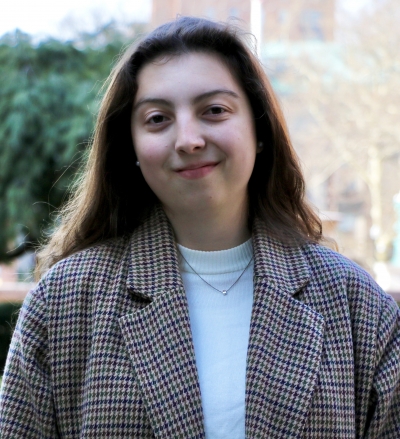
Major: Economics, History (double major)
Research topic: The “antimonuments” on Mexico City’s Reforma Avenue, which commemorate injustices like forced disappearances, femicides and tragedies resulting from corruption. My project looks at the broader tradition of countermonuments — originating from 1980s European memorials to the Holocaust and against fascism — and locates Mexican antimonuments within it, focusing on their distinctive characteristics. I add to the existing literature by arguing that Mexican antimonuments are necessarily anti-state.
Why I chose it: I’m from Mexico City, born and raised, so I noticed when these antimonuments began popping up in 2015. I had so many questions. Who was putting them up, and why? It wasn’t until last spring that I got the chance to explore my curiosity: I was taking a class with Professor Pablo Piccato about memory and justice in Latin America, which was all about how “historical memory” is understood and deployed by states and citizens. When the time came to choose subjects for our final project, you can guess where my mind immediately went.
These antimonuments are clandestinely installed by an anonymous collective, and they’re intended as demands for justice by the citizenry. I was really drawn to the idea that memorializing an injustice could potentially spur social change to resolve it.
Biggest takeaway: What most struck me was how neatly these antimonuments fell into the storied tradition of Mexican civil society. My senior thesis in history now also has to do with citizens’ involvement in policy, namely in education, and I think my project illustrated how relevant and active that involvement remains, even as it has been historicized. As an aside, I did the research for this project the old-fashioned way — using paper notecards and organizing them. It rocked my research-process world, and I’m glad I discovered it!
Julia Goralsky CC’25
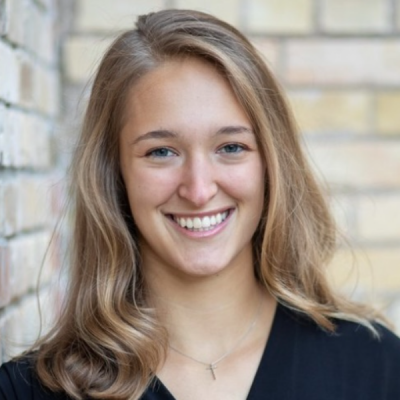
Major: Biochemistry, Comparative Literature (double major)
Research topic: My project centers on the dynamics of dendritic cell (DC) migration and the systems we use to explore these phenomena on a microscopic level. I developed three “chip” designs, which used a combination of different chambers and channels that could help us visualize changes in DC surfaces when they changed direction in migration. We subsequently printed the designs in 3D, created PDMS versions and then recorded video, tracking DC movement within these models.
Why I chose it: Beforehand, I had been working with another member in the lab on a project studying neutrophil migration in cystic fibrosis. Their project required the use of a similar “chip” design to visualize neutrophil migration speed in correlation to a specific CF treatment. Accordingly, I jumped at the opportunity to apply the CAD design skills I had applied to that project to my own project on dendritic cells.
Biggest takeway: Mine pertained less to the research and more to the team I was working with. Having significantly different professional and educational backgrounds, everyone in the lab had their own distinct experience with the research process. It was such a great experience to learn from the different emphasis we each put on different aspects, as well as the broader structure of research around the lab’s base in France.
Furthermore, the research’s immunology focus encouraged me to pursue immunology coursework while studying abroad, and more recently complete an internship focused on transplant immunology.
Lina Huang CC’26

Major: Biology, Medical Humanities (double major)
Research topic: I study how the immune system protects against pathogens. Specifically, I look at how history of infections alters local environments where immune cells develop. This can influence the immune response to subsequent, unrelated infections.
Why I chose it: I was writing for my high school paper and science magazine at the height of the Covid-19 pandemic and became interested in all the research coming out about the virus, our immune response and where we could go moving forward. I joined the Farber Lab at Columbia Irving Medical Center hoping to learn more, and got really immersed in how intricate and surprising the immune system can be.
Biggest takeaway: With an infection, a population of immune cells that recognize that specific infection develop. In our research, we saw that a previous, unrelated infection could reduce the generation of immune cells specific for a subsequent infection. This can be for a number of reasons — for example, the immune cells that develop from the first infection could fill the tissue site, making it harder for subsequent immune cells to enter the space. It indicates that past exposures have an impact on our response to future infections, which could be important for strategizing how to time interventions like vaccines.
Sam Klein Roche CC’25
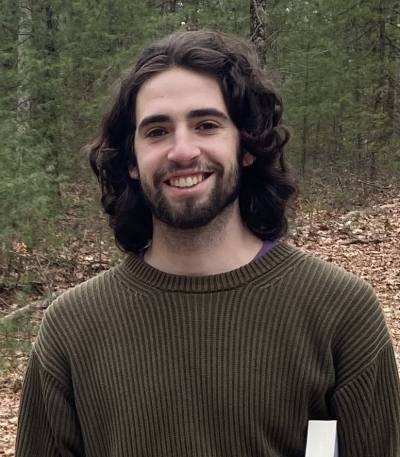
Major: English
Research topic: This summer I translated Yemey Moharnat, the memoirs of Nathan Sternhartz of Nemirov, a student and scribe of Hasidic leader Nahman of Breslov. The text was originally written in a very specific style of 19th-century rabbinic Hebrew and deals with Sternhartz’s complicated relationship with his teacher.
Why I chose it: Breslov Hasidism, the spiritual movement originating from Nahman of Breslov, and its vast and diverse literary corpus have been an interest for several years. This past summer I wanted to become more familiar specifically with the hagiographical/biographical side of Sternhartz’s writings. His memoirs have never been translated into English, and they contain fascinating insights into his character as well as the process of composing and publishing Nahman’s teachings. The memoir depicts how Sternhartz’s devotion to consolidating his teacher’s legacy came at a great personal cost, as well as Sternhartz’s path to becoming the de facto leader of the nascent movement after Nahman’s death.
Biggest takeaway: I was especially struck by Sternhartz’s account of his teacher’s death. He expresses regret at not allowing himself to consider that Nahman might actually die and, as a result, missing the opportunity to hear Nahman’s final lessons. It was also fascinating to see how Sternhartz applies the theology that he has developed together with Nahman to the narrative of his own life. He attributes cosmic significance to the obstacles he encounters while serving as a loyal devotee of Nahman in the face of his family’s fierce objections.
Sternhartz’s highly unique prose contains numerous neologisms that are often adapted from the homilies that he assisted Nahman in composing. It was a rewarding challenge trying to decipher each phrase and hear how the language contains echoes of the rest of the Breslov canon.